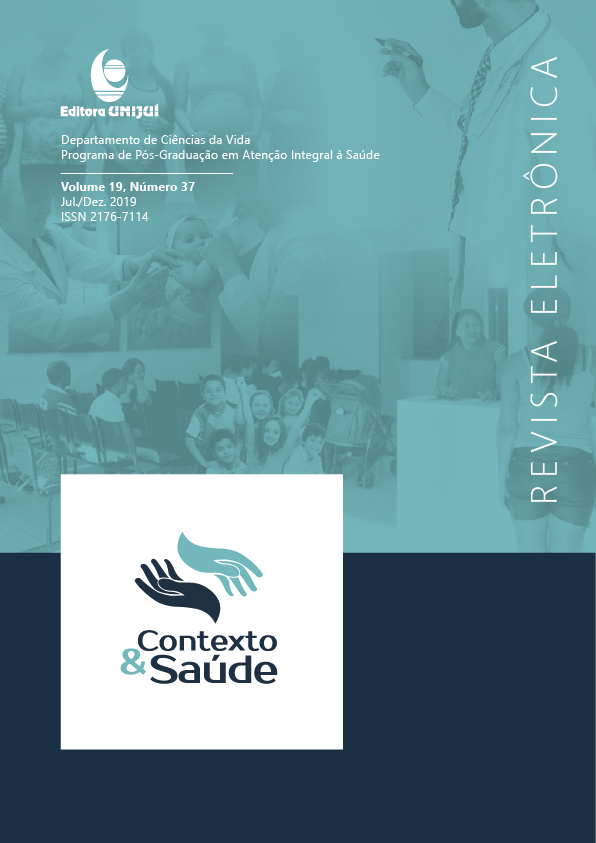SEDENTARY BEHAVIOR IN ADOLESCENTS: HIERARCHICAL ANALYSIS OF ASSOCIATED FACTORS
DOI:
https://doi.org/10.21527/2176-7114.2019.37.128-136Keywords:
estilo de vida sedentário; sexo; atividade motora; classe social; maturação sexual; estado nutricionalAbstract
Objetivo: verificar fatores associados aos diversos contextos de comportamentos sedentários em adolescentes. Métodos: estudo correlacional de corte transversal, com amostra representativa de adolescentes de São José dos Pinhais-PR (n = 785). Os comportamentos sedentários autorreportados, foram o tempo em atividades de tela, educacionais, culturais, sociais e transporte. Os fatores associados ao comportamento sedentário foram: sexo, nível de atividade física, nível socioeconômico, maturação sexual e estado nutricional. As associações foram testadas com a regressão de Poisson. Resultados: O sexo feminino foi associado ao elevado tempo de tela (RP: 0,83; IC95%: 0,72- 0,96), em atividades educacionais (RP: 1,62; IC95%: 1,38 – 1,90), em atividades culturais (RP: 0,41; IC9%: 0,30 – 0,56) e sociais (RP: 0,58; IC95%: 0,53 – 0,64). O nível insuficiente de atividades físicas se associou as atividades culturais (RP: 0,68; IC95%: 0,49 – 0,94) e ao tempo em transporte (RP: 0,51; IC95%: 0,45 – 0,58). A maturação sexual foi associada as atividades sociais (RP: 0,80; IC95%: 0,68 – 0,95). O estado nutricional se associou as atividades culturais (RP: 1,62; IC95%: 1,04 – 2,52). Conclusões: os achados sugerem que diferentes tipos de comportamento sedentário podem estar associados ao sexo feminino, nível de atividade física, maturação sexual e estado nutricional, e esses fatores devem ser considerados em futuras intervenções para a promoção da saúde.
Downloads
Published
How to Cite
Issue
Section
License
By publishing in Revista Contexto & Saúde, authors agree to the following terms:
The works are licensed under the Creative Commons Atribuição 4.0 Internacional (CC BY 4.0) license, which allows:
Share — to copy and redistribute the material in any medium or format;
Adapt — to remix, transform, and build upon the material for any purpose, including commercial.
These permissions are irrevocable, provided that the following terms are respected:
Attribution — authors must be properly credited, with a link to the license and indication of any changes made.
No additional restrictions — no legal or technological measures may be applied that restrict the use permitted by the license.
Notes:
The license does not apply to elements in the public domain or covered by legal exceptions.
The license does not grant all rights necessary for specific uses (e.g., image rights, privacy, or moral rights).
The journal is not responsible for opinions expressed in the articles, which are the sole responsibility of the authors. The Editor, with the support of the Editorial Board, reserves the right to suggest or request modifications when necessary.
Only original scientific articles presenting research results of interest that have not been published or simultaneously submitted to another journal with the same objective will be accepted.
Mentions of trademarks or specific products are intended solely for identification purposes, without any promotional association by the authors or the journal.
License Agreement (for articles published from September 2025): Authors retain copyright over their article and grant Revista Contexto & Saúde the right of first publication.

